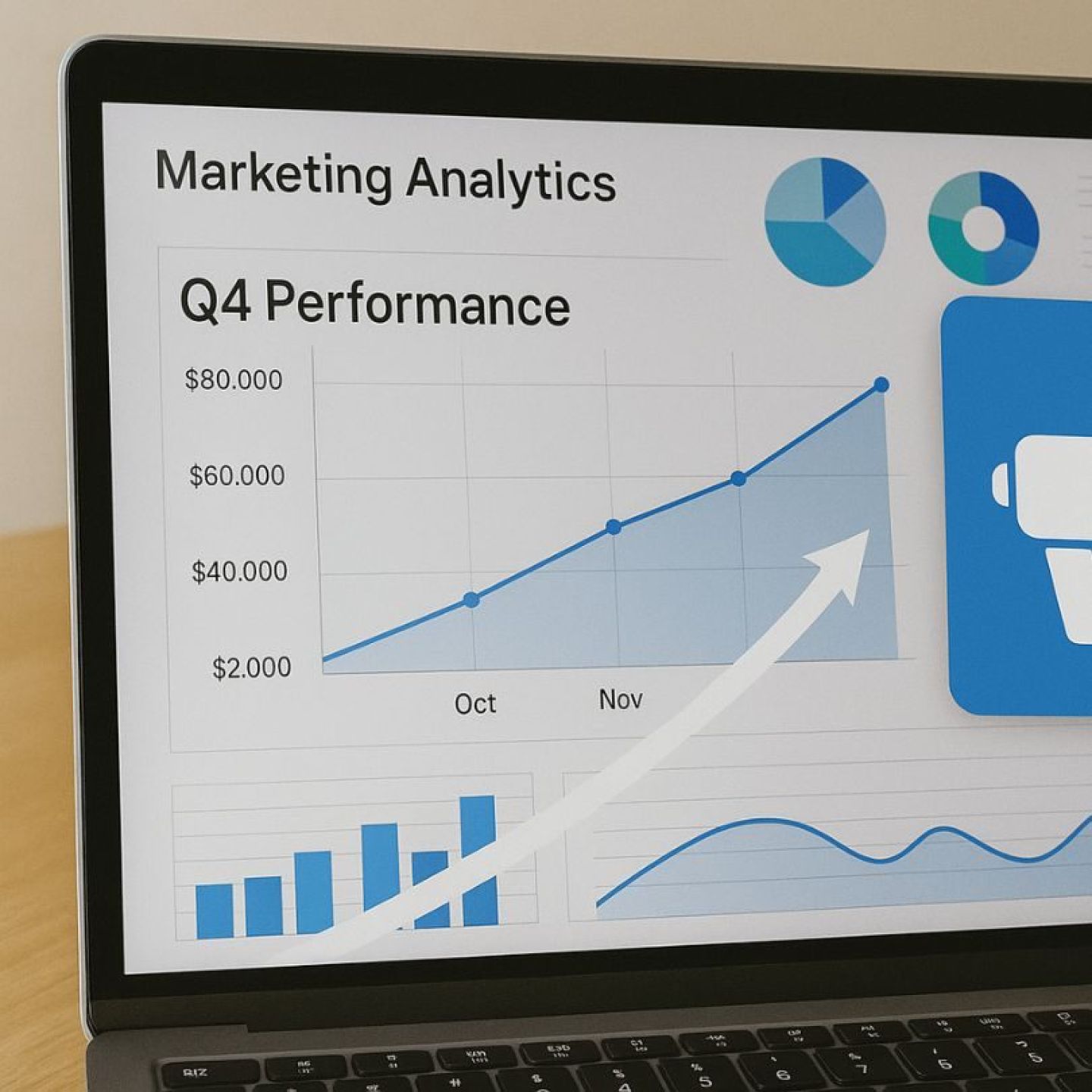
Our dropship tool integrates with Shopify and Woo-Commerce stores and automates your entire dropshipping business!
Get StartedQ4 is the most profitable time for your dropshipping business, but being successful during this busy season requires more than just guessing—it requires predictive analytics for dropshipping: using data to predict Q4 bestsellers.
During Black Friday, Cyber Monday, and the holiday rush, you'll be up against tough competition. The key to thriving instead of just getting by is being able to accurately predict demand, optimize your inventory strategies, and quickly adapt to changes in the market.
This guide will teach you how to use predictive analytics in dropshipping to turn raw data into useful insights. You'll learn how to use AI dropshipping trends 2025 to find winning products before your competitors do, automate important tasks, and boost your Q4 dropshipping sales when consumer spending is at its highest.
By using these strategies based on data, you'll be able to:
Predictive analytics in dropshipping transforms raw data into actionable insights that drive your business decisions. At its core, this approach uses historical sales data, market trends, and consumer behavior patterns to forecast future outcomes. You're essentially teaching algorithms to recognize patterns that human analysis might miss, giving you a competitive edge in identifying opportunities before they become obvious to everyone else.
Machine learning algorithms process vast amounts of data to predict which products will trend during specific periods. These systems analyze variables like search volume, social media mentions, seasonal patterns, and past purchasing behavior to generate forecasts. When you apply these techniques to your dropshipping store, you can spot emerging bestsellers weeks before they peak, allowing you to position your inventory and marketing strategies ahead of the competition.
The benefits of implementing a data-driven dropshipping strategy extend across multiple operational areas:
By leveraging drop shipping analytics, you gain the ability to make proactive decisions rather than reactive ones. This positions your dropshipping business to capitalize on Q4's massive sales opportunities.
Q4 is the most profitable quarter for e-commerce businesses, thanks to a series of holidays when people spend a lot. It starts with Halloween, then comes Black Friday, Cyber Monday, Christmas, and finally New Year's Eve. During this time, people spend the most money of the year as they look for gifts, decorations, and treats for themselves.
To better understand why Q4 is so important for dropshipping success, let's take a closer look at the product categories that tend to do well during this time:
While Q4 presents great opportunities, it also comes with its fair share of challenges:
Accurate forecasting becomes crucial in addressing these challenges head-on:
By taking a data-driven approach through accurate forecasting, you can transform Q4 from a chaotic scramble into a strategic revenue opportunity.
To navigate the challenges of Q4 successfully, it's essential to leverage platforms that provide insights into the hottest selling products. For example:
"Using resources like Anstrex, which allow you to find the hottest dropship products and manage your store from one single platform, can significantly streamline your operations and enhance your chances of success during this critical quarter."
You need the right predictive tools for dropshippers to transform raw data into actionable insights during the holiday rush. AutoDS stands out as a comprehensive automation dropshipping software that combines predictive capabilities with operational efficiency. The platform analyzes historical sales patterns and current market trends to help you identify which products will dominate your Q4 catalog.
Predictive Analytics for Dropshipping: Anticipating Q4 Bestsellers becomes practical when you use tools that integrate multiple data streams. AutoDS monitors price fluctuations and stock availability across your supplier network in real-time, alerting you before potential stockouts derail your sales momentum. You can set automated rules that adjust pricing based on competitor activity, ensuring you remain competitive without constant manual oversight.
The power of these platforms lies in their ability to track supplier performance metrics continuously. You'll see which suppliers consistently maintain inventory levels during peak demand and which ones struggle with fulfillment speed. This intelligence lets you diversify your supplier base strategically before Q4 hits full force.
When you combine automation with predictive insights, routine tasks like order processing happen seamlessly while you focus on strategic decisions. The software can automatically import winning products based on trending data, update inventory counts, and process orders without your intervention. During Black Friday weekend, when orders flood in by the minute, this automation prevents bottlenecks that could cost you thousands in lost revenue.
Your marketing campaigns become exponentially more effective when you base them on actual consumer behavior patterns rather than guesswork. Predictive analytics transforms raw data into actionable insights that shape your promotional strategies throughout Q4.
Product bundling represents one of the most powerful applications of a data-driven dropshipping strategy. You can analyze which items customers frequently purchase together and create compelling bundle offers that increase average order value. If your data shows that customers buying Halloween decorations also purchase LED string lights, you create a ready-made combo that addresses their needs before they even search for it.
Personalized discounts hit differently when they're timed perfectly. You use purchase history and browsing behavior to identify when specific customers are most likely to convert. Someone who abandoned their cart three times for fitness equipment might respond to a 15% discount email sent exactly when they typically browse your store.
Targeted email campaigns powered by consumer preference data deliver significantly higher open rates and conversions. You segment your audience based on their past purchases, browsing patterns, and engagement levels. A customer who bought pet supplies last November receives early access to your new pet product line this year.
Real-time offer customization takes personalization to another level. You anticipate customer needs by analyzing their current session behavior and immediately adjust product recommendations, pricing, or promotions displayed on your site.
AI-driven customer support chatbots trained on predictive models handle common queries while identifying upsell opportunities. These solutions learn from every interaction, improving response accuracy and customer satisfaction while freeing you to focus on strategic decisions.
Supplier reliability dropshipping becomes your safety net when demand spikes unexpectedly during Q4. You need backup plans when your primary supplier runs out of stock or experiences shipping delays during Black Friday rushes.
Predictive analytics transforms how you manage supplier relationships by continuously tracking performance metrics across your entire network. You can monitor:
Working with suppliers in multiple regions gives you strategic advantages. When your US-based supplier faces a stockout, your European or Asian alternatives keep orders flowing. You reduce average delivery times by routing orders to the geographically closest supplier with available inventory.
The data reveals which suppliers consistently meet their commitments during high-pressure periods. You'll spot warning signs before problems escalate—like gradual increases in processing times or declining stock replenishment rates. This intelligence lets you shift order volume to more reliable partners before your customers experience delays.
Your predictive models calculate optimal supplier allocation strategies based on historical performance data, current inventory levels, and forecasted demand. You maintain zero physical inventory while effectively managing risk through diversified supplier partnerships backed by continuous data monitoring.
The world of predictive analytics for dropshipping is changing quickly. Big data dropshipping analytics is becoming essential for staying ahead of the competition. One major trend you can expect to see is the rise of multi-channel data fusion. This means being able to combine information from various sources like social media, marketplace platforms, website analytics, and customer service interactions into one comprehensive forecasting model. Unlike single-source analytics, which only looks at one aspect of consumer behavior, this integration will give you a complete understanding of how your customers think and act.
One major trend you can expect to see is the rise of multi-channel data fusion. This means being able to combine information from various sources like:
This integration will allow you to create unified forecasting models that provide a more accurate picture of consumer behavior.
Unlike single-source analytics, which only looks at one aspect of consumer behavior, multi-channel data fusion will give you a complete understanding of how your customers think and act. This holistic view will enable you to make better business decisions and stay ahead of your competitors.
Business intelligence dropshipping platforms are also advancing rapidly. Tools like Tableau and Power BI now work seamlessly with CRM systems such as Salesforce, allowing you to track key performance indicators (KPIs) throughout your entire sales process. With real-time dashboards that automatically update as new data comes in, you'll be able to monitor important metrics like conversion rates, customer lifetime value, and product performance without any delays.
Tools like Tableau and Power BI now work seamlessly with CRM systems such as Salesforce, allowing you to track key performance indicators (KPIs) throughout your entire sales process.
With real-time dashboards that automatically update as new data comes in, you'll be able to monitor important metrics like conversion rates, customer lifetime value, and product performance without any delays.
AI-powered analytics platforms are also changing the game when it comes to decision-making speed. Instead of waiting hours or days for reports, algorithms can now process large amounts of data in seconds. This means you'll be alerted to issues such as inventory shortages or price changes before your competitors even notice them. These systems continuously learn from each transaction, improving their predictions for upcoming bestsellers with increasing accuracy.
AI-powered analytics platforms are also changing the game when it comes to decision-making speed.
Instead of waiting hours or days for reports, algorithms can now process large amounts of data in seconds.
This means you'll be alerted to issues such as inventory shortages or price changes before your competitors even notice them.
These systems continuously learn from each transaction, improving their predictions for upcoming bestsellers with increasing accuracy.
Visualization tools have come a long way too. No longer limited to basic charts, they now offer interactive experiences that allow you to explore complex datasets with ease. Intuitive interfaces make it simple for anyone on your team—regardless of their technical expertise—to identify trends and outliers that would otherwise go unnoticed in spreadsheets.
Visualization tools have come a long way too.
No longer limited to basic charts, they now offer interactive experiences that allow you to explore complex datasets with ease.
Intuitive interfaces make it simple for anyone on your team—regardless of their technical expertise—to identify trends and outliers that would otherwise go unnoticed in spreadsheets.
Geographic demand concentrations can be visualized using heat maps while predictive graphs show projected sales paths based on current momentum and past patterns—all critical insights for optimizing inventory management strategies across different regions.
Geographic demand concentrations can be visualized using heat maps while predictive graphs show projected sales paths based on current momentum and past patterns—all critical insights for optimizing inventory management strategies across different regions.
When you implement predictive analytics in your dropshipping business, you're handling vast amounts of customer data—purchase histories, browsing patterns, payment information, and personal details. Secure data management dropshipping practices aren't optional; they're essential for maintaining customer trust and avoiding costly legal penalties.
Compliance predictive analytics e-commerce regulations vary by region, but you need to understand the key frameworks:
You should implement these best practices when integrating multiple analytic platforms:
Your analytics tools should include built-in compliance features like automatic data retention policies and consent management systems. You need to document your data handling procedures and train your team on security protocols to prevent breaches that could compromise your entire operation.
To maximize your dropshipping sales in Q4, you need to adopt a comprehensive data-driven strategy that combines forecasting, automation, marketing optimization, and supplier management into one seamless system. The benefits of predictive analytics for dropshipping businesses during peak seasons are clear—from predicting bestsellers to avoiding expensive stockouts and optimizing your marketing budget.
Predictive Analytics for Dropshipping: Anticipating Q4 Bestsellers is no longer just an advantage over competitors—it's becoming necessary to survive in a market that's getting more crowded every day. You must stay ahead by constantly adjusting to new AI trends and using powerful analytic tools that give you up-to-date information about customer behavior and market changes.
The dropshippers who succeed in Q4 are the ones who use strong analytics platforms along with secure data practices and strategies involving multiple suppliers. You have the resources and understanding you need. Begin putting these predictive analytics methods into action now, and you'll set your dropshipping business up to earn the most money possible during the busiest quarter of the year while also creating steady growth for future seasons.
Receive top converting landing pages in your inbox every week from us.
Announcement
Stay ahead of the competition with the top dropshipping trends set to dominate December 2025. From trending products to automation tools and marketing tactics, discover what’s driving the next wave of eCommerce success. Learn how to adapt your strategy to meet shifting consumer demands and boost year-end profits. A must-read for dropshippers preparing for a high-performing holiday season.
Dan Smith
7 minDec 5, 2025
Trending
This blog explores how strategic influencer collaborations can turn ordinary dropship campaigns into viral successes. It highlights how to choose the right influencers, craft authentic partnerships, and create engaging content that resonates with target audiences. Readers will learn proven tactics for boosting brand awareness, driving sales, and building credibility through influencer marketing. A must-read for dropshippers looking to scale their business with social media influence.
Rachel Thompson
7 minNov 18, 2025
Tips & Tricks
Dropshipping has transformed e-commerce by allowing you to sell products without holding inventory. You partner with suppliers who ship directly to your customers, eliminating warehousing costs and operational complexity. This business model continues gaining momentum as entrepreneurs seek flexible, location-independent income streams.
Samantha Reed
7 minNov 12, 2025




